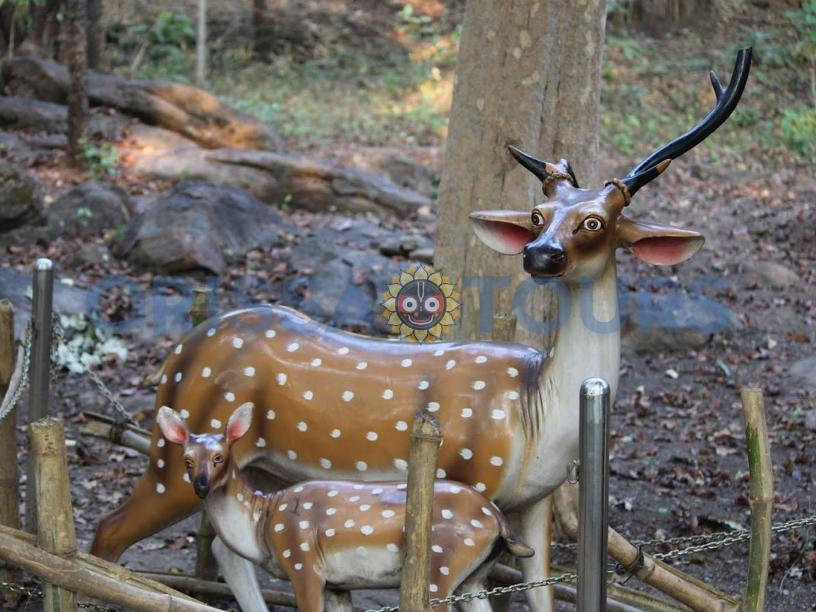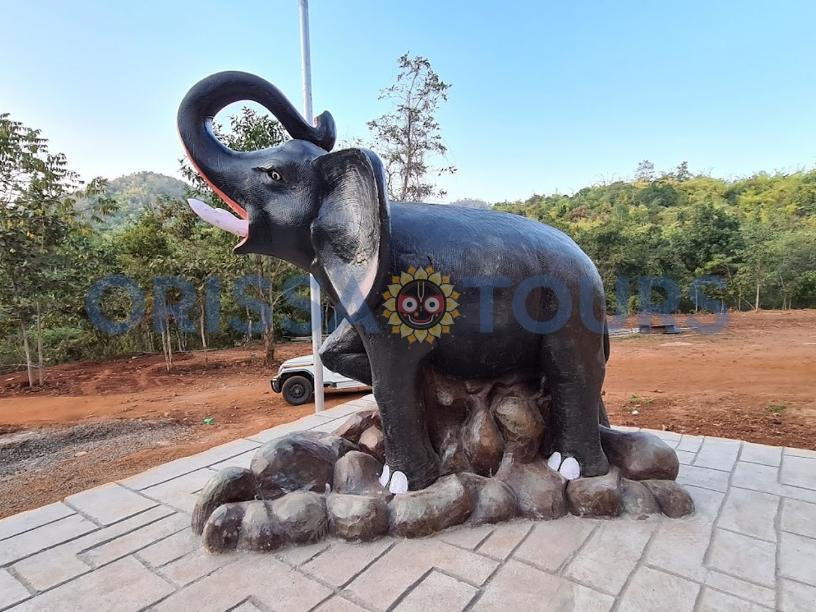The Karlapat Wildlife Sanctuary, lying in the heart of Kalahandi, Odisha, is a lesser-known paradise for nature and wildlife lovers. Encompassing an area of 175 square kilometers, this sanctuary is a biodiversity hotspot offering magic with its combination of lush greenery, rocky hills, and dozens of amazing fauna and flora.
A true nature-lovers paradise is the Karlapat Wildlife Sanctuary, with the promise of serenity and unspoiled natural beauty where various wildlife can live, from leopards and tigers to elephants and numerous species of birds. In short, the sanctuary’s dense forests, gushing waterfalls, and mingling streams create a vista that captivates any eye.
Be it a wildlife photographer or trekking fans and nature-lovers-there’s an experience for everybody in this biota. The Kalahandi culture is right around the corner, adding to the allure of this destination, which makes it one of the must-visit places in Odisha.

Flora and Fauna of Karlapat Wildlife Sanctuary
The Wildlife Sanctuary at Karlapat consists of a rich flora and fauna. The thick forests here contain sal, bamboo, and teak trees, among others. Medicinal plants have been used by the local people here since ancient times. Thick greenery here is a very nice habitat for many animals; these animals include endangered ones like tigers, leopards, and gaurs (Indian bison).
It is also a haven for bird watchers and has some other species like hill myna, peafowl, and hornbills. Because of the numerous reptiles, amphibians, and butterflies found here, this is also an ecological research and conservation center. The richness of species present here only highlights its importance among prominent ecological hotspots in Odisha.

Best Time to Visit Karlapat Wildlife Sanctuary
Are you planning a trip to Karlapat Wildlife Sanctuary? The best time to visit is during winter, from November to February, as the weather is nice and suitable for hiking along the sanctuary’s trails. These months can have a good chance of spotting wildlife, as animals usually come out to warm themselves or hang around waterholes.
The monsoons beautify the sanctuary in countless shades of green from June to September, with waterfalls and streams in full flow; unfortunately, trekking can become difficult because of slippery paths. The summer is hot, but it gives the unusual opportunity to see the animals near waterholes. Whatever the season, Karlapat Wildlife Sanctuary guarantees an excellent experience, with every visit sharpening the view of its natural beauty.
Activities and Attractions in Karlapat Wildlife Sanctuary
KARLAPAT WILDLIFE SANCTUARY-Karlapat Wildlife Sanctuary can offer a multitude of activities to seekers of adventure and lovers of nature. Trekking within the sanctuary is one of the most adventurous undertakings within its raw dense forests, with the possibility to spot wildlife and enjoy picturesque views.
Birdwatchers can enjoy the rich diversity of birds in the sanctuary, while others can capture nature’s palette of stunning landscapes and vibrant wildlife in their photographs. The sanctuary hides lovely waterfalls like Phurlijharan that give value to the picturesque beauty.
There are nature trails that will help one to know more about the flora and fauna of the forest, making it ideal for eco-tourism. Karlapat Wildlife Sanctuary offers a rich wildlife experience where one can take the trails or simply enjoy the serene beauty ambiance.
Conservation Efforts at Karlapat Wildlife Sanctuary
The Karlapat Wildlife Sanctuary is not only a tourist destination but also one of the wildlife conservation centers. This sanctuary has an outstanding responsibility for the protection of many endangered species and the conservation of the rich biodiversity of the region.
Initiatives such as anti-poaching patrols, rehabilitation of habitats, awareness programs in the village communities, etc. have contributed in a remarkable way to the cause of the protection of wildlife. Here, eco-tourism is being developed and promoted so that there can be sustainable development without harming the environment.
The involvement of the local community is extremely critical to promote conservation and also to develop a sense of responsibility and ownership. To a very large extent, these efforts have put Karlapat Wildlife Sanctuary in the limelight as a model for wildlife protection in the state of Odisha; it should be recognized that conservation and tourism cannot be traded off easily.
Tips for Visiting Karlapat Wildlife Sanctuary
This means being prepared for a good, safe experience while visiting the Karlapat Wildlife Sanctuary. In addition, always remember to get all necessary permits before entering the sanctuary, and hire a local guide to help with better sightings and knowledge of the wildlife. Ensure comfortable clothing and sturdy shoes, for the terrain, may prove difficult.
Carry with your water, snacks, insect repellent, and a first-aid kit. Do not enter restricted areas and keep a safe distance when seeing any wildlife. Respect the rules of the sanctuary and help with conservation by not littering. Tips like this are sure to make your entire experience of visiting the Karlapat Wildlife Sanctuary one to remember.
Cultural Significance of Karlapat Wildlife Sanctuary
Karlapat Wildlife Sanctuary, an adoptive embrace of natural splendor and cultural heritage, is by nature surrounded by tribal communities that have coexisted in perfect unison with nature for thousands of years. The rich cultural legacy of Kalahandi, expressed through its traditions, festivals, and ecofriendly modes of life, offers an edifying alternative to outsiders who make their way into the area.
Visitors can interact with local communities and learn first-hand about their lifestyle and even participate in eco-tourism activities that help earn them their livelihoods. Karlapat Wildlife Sanctuary thus becomes more than a place of nature; it is a holistic destination where conservation goes hand in hand with cultural preservation.
Tourist Facilities, Transportation, Tourist Attractions, How to Reach, Accessibility
Opening Time
Karlapat Wildlife Sanctuary’s opening time is Monday to Sunday 9 am to Evening 6 pm
Best Time to visit
The best time to visit Karlapat Wildlife Sanctuary is from October to June and the winter season.
Closest Bus Stand
The closest Bus stop is Bhawanipatna, which is located around 58 KM distance from Karlapat Sanctuary
Closest Railway Station
The closest Railway Station is Bhawanipatna, which is located around 63 KM distance from Karlapat Sanctuary
Closest Airport
The closest airport is Biju Patnaik International Airport, Bhubaneswar, which is located around 457 KM distance from Karlapat Sanctuary








